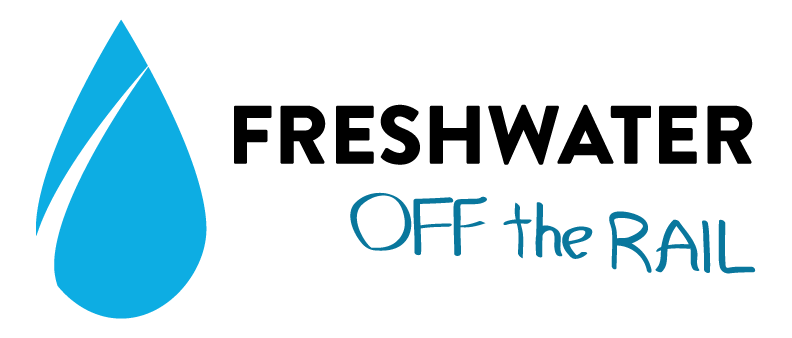Transit and Me
- one part essay, one part timeline, no part especially organized -
As a kid, I swung from one odd interest to another. It started with parking meters. For a year it was license plates. There was a stint with drive-thru banks. By the middle of fifth grade, I exercised full control of where my parents would stop to refuel – was I in the mood to use gas pumps manufactured by Wayne, or was it more of a Tokheim day?
In the summer before sixth grade, my mother took my friend Lance and me to Chicago. At some point on that two-day trip, my mom suggested something innocent enough: let's take the bus to the museum.
Okay. I had used subways before; I even rode the Detroit People Mover on its inaugural day circa 1987. But the bus? A new adventure. Before even boarding, I took an immediate interest in all the different numbers. We're waiting for the 146, but what's the 151? Ah, here comes the 145 – isn't that close enough?
We took maybe three more bus rides on that trip. Each time, I found something else to wonder about. The routes. The maps. The fares. The colors. The new buses versus the old buses. The hand-and-glove relationship with the city itself. My new interest had found me. There was no turning back.
Coming home, I was aware that no comprehensive transit system existed in Southeast Michigan. Even then, I was not happy with that situation. I began a two-pronged mission to do something about it. One, I became familiar with the transit options that were available. Two, I feverishly researched transit in other cities – and used "non-native" systems whenever there was a chance.
My mission has taken a few twists and turns along the way. I am listing a few milestones to show the evolution of the quest. The goal of this list is not to brag, but rather to illustrate an ongoing learning process. It's all part of a ever-burning desire to improve transit.
Age 12 – permission to ride transit "unsupervised". It lead to fun (and mostly harmless) after-school outings with buddies (Matt Bowman, where have you gone?!) Seriously, it kept us out of trouble. Riding the bus to distant places like Royal Oak and Warren was far more exhilarating than smoking cigarette butts in the woods.
Age 13 – early forays into advocacy. Upon learning of a first-ever suburban transit millage, I participated in grass-roots efforts to help drum up support. The dollars and cents were still a mystery to me, but I knew that a "yes" vote would lead to modest transit enhancements.
Age 14 – connecting the dots. On a trip to Texas, again with my friend Lance, we used an inconvenient private shuttle to ride from the hotel to Six Flags to Wet n Wild – that was the extent of our mobility. This didn't happen just anywhere in Texas. It happened in Arlington – which, then as now, is the largest city in the US with no transit service. I asked the shuttle driver why that was. He literally pointed to the Texas Rangers stadium – built with public money – and said "that could have been our transit". And there it was: crossing over I-30 in a little cutaway bus, I experienced one of the top a-ha moments of my life.
Age 16 – transit and transportation. By now, I understood that transit didn't exist in a vacuum. It had a profound but not always obvious bond with its surroundings. The choices we made for our cities shaped our transportation systems – and vice versa. I branched out to learn more about highway funding, zoning, urban planning, and other overlapping issues in the transportation continuum. This including attending many meetings and open houses, with topics ranging from funding formulas to roundabout engineering to freeway widening.
Age 17 – a little excursion. Back when public school started before Labor Day, state law required that we also have the Friday before Labor Day off. A de jure encore for summer-centric businesses, I suppose. Among transit enthusiasts, the news of the day was the closing of a historic trolley line in Pittsburgh – the 47D Drake. It was a unique alignment with legendary rolling stock – PCC streetcars. Hmm, I have no plans for the long weekend, and Pittsburgh isn't that far, I thought. Twenty minutes later, I was barrelling eastward – asking permission or seeking out a travel buddy would cost precious time. Flying solo, I made it to Pittsburgh by Friday afternoon rush hour. I joined PCC number 4008 for a round-trip and took plenty of photos. A daring move, but it went off without a hitch.
Age 18 – memorable field research. On a school trip to Washington, DC, I brazenly ignored the requirement to travel in groups on our free day. I had bigger plans – cover some serious ground on transit. And I'd have to start early, both to maximize distance and to subvert authority. I figured, they're not patroling the halls at 4:30am – what kind of kid is going to bust away at that time? I was right – I quietly slipped out onto Colesville Rd and began a full day of exploration. First up, sightings at Silver Spring Metro station. I cracked some major puzzles in the bus fleet numbers – yes, there were three different variations of Flxibles all in the 9400 series. I hopped on the first Red Line train – a couple transfers later, I had crossed state lines before my roomies sat down to continental breakfast.
Age 19 – daydreaming about routes. I went to almost every lecture and every discussion period in college. But I spent most of them doodling maps or listing transit routes. After one particularly uninspiring class, I had filled a looseleaf page with a roster of San Francisco bus routes – 1 California to 108 Treasure Island. I hatched a little challenge for myself: Can I list 1,000 transit routes off the top of my head? I opened Excel, thought through every network I knew, and banged it out. It was only about 75 percent accurate – checking my work presented the real learning opportunity.
Age 20 – going pro. If I didn't love college, I at least loved my part-time job while there: driving a bus on campus. If I was serious about improving transit, what better way to gain exposure to everyday realities? Driving itself never lost its charm, and with each shift came new lessons – both people lessons and strategic operational lessons. It remains one of the best jobs I've ever had. And my Commercial Drivers License? You'll pry it from my cold, dead hands.
Age 21 – DIY transit planning. Long story short, I co-founded an upstart transit system. Campus to airport. Carries thousands. Employs dozens. Involves a wide range of administrative tasks – payroll, budgeting, planning, scheduling, marketing, reporting, politicking. Acts as hands-on education for many student administrators – we have undergrads that can hold their own with seasoned veterans. As one of my higher-profile projects, the airport service has its own identity. I won't spend any more time on it here, but it's my baby, no question.
Age 22 – scheduling scholar. My first full-time job sent me to "scheduling camp" – a one-week seminar in Canada for operations planning newcomers. I networked with people from Bermuda to Banff, and learned the basics of transit scheduling in the process. During the week, groups competed to develop the most efficient schedule for an imaginary transit system. Thanks to clever interlining, contract-compliant rest breaks, streamlined reliefs, and appropriate service levels, the group of which I was part scored the most points – by far. A strange accomplishment to get excited about – but that's when I knew that scheduling was for me.
Age 25 – many parts. At my job, I participated heavily in a very complex project. The goal was to rework a long-neglected sector of the transit system. The indicators were cost, resource usage, connectivity, ridership and community impact. There were no consultants involved – just in-house people who listened, who knew and who cared. For my part, I was able to interact with hundreds of stakeholders, review alternatives, size up the budget, plan the new routes, give them route numbers, write their schedules, cut runs, draw maps, train drivers, place bus stops, prepare customer notices and reprogram destination signs – and jack the destination sign font so the "5" had a graceful arch in the stem. Whew. When that service hit the road, I never felt so fulfilled. Never mind me – the new routes were carrying more people and truly doing more with less. This is the joy of public service.
Age 27 – presentation. Due to factors beyond my control, I began moving backwards in my career. Working for managers who didn't understand my ambitions, I soon found myself keeping the chair warm and staring at the wall. I literally had no way to be productive at work, but I spent my personal time learning another component of transit: presentation. During this phase, I traded Trapeze for Illustrator. I continued to research materials from other transit systems, and figured out how to bring first-rate presentation to my transit projects. It's a skill that has applications beyond transit – but I see maps and schedules whenever viewing any vector graphic.
Age 28 – different paths. Intrigued by layout, I took a job with a transit information design firm. It has proven a fun chance to test new concepts and reach users at top-tier transit systems. As with all my experiences, it has opened my eyes to innovative techniques. Bettering the public's understanding of transit is a fundamental challenge – clean graphics and user-friendly amenities are optimal tools to do so.
Age 29 – wide-open future. With a diverse skillset – applicable within and without transit – I decided to open myself up to new opportunities. The intent, of course, is to further my participation with transit projects. With capability in multiple areas, working independently will allow me to maximize my contributions. I am excited to retain ties with current employers and long-time collaborators – and also explore new avenues for learning and doing.
From my projects, my career, my frustrations and my accomplishments, I have only one conclusion: follow your heart. Please, please, please, follow your heart. If there's one thing that motivates you like no other – however unlikely or offbeat – go with it. No one else can fully understand your passion, so don't slow down if you get some funny looks. See where it takes you. There's no guarantee that it will lead to success – but whatever you learn from it will matter. And maybe you'll find a different definition of success altogether.
Thanks for visiting Freshwater Railway

